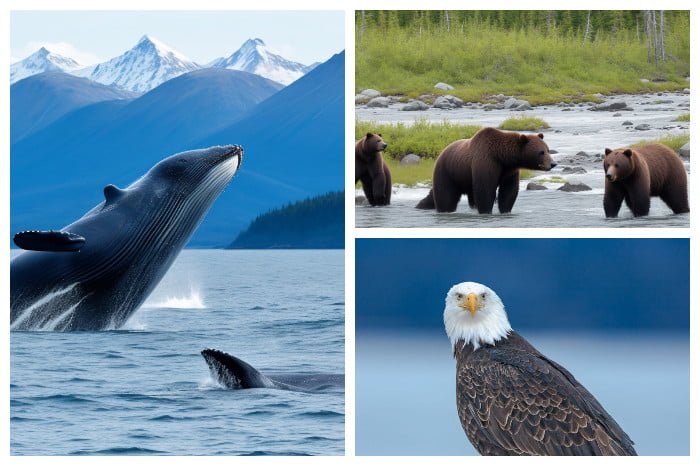Imagine yourself exploring the breathtaking beauty of the local wildlife, surrounded by captivating scenery and fascinating creatures. But amidst all the excitement, it’s crucial to prioritize your safety. That’s why we’ve compiled a collection of invaluable tips to keep you protected and secure while immersing yourself in the wonders of nature. From understanding local wildlife behavior to staying informed about weather patterns and other essential safety considerations, these tips will ensure that your adventure remains a memorable one, free from any potential risks. So get ready to embark on an unforgettable journey, armed with the knowledge and confidence to fully enjoy the marvels of the natural world.
Table of Contents
ToggleSafety Tips for Wildlife Watching
The world is full of incredible wildlife, and being able to witness and appreciate these creatures up close is a wonderful experience. However, it’s essential to prioritize safety when venturing into the local wildlife’s domain. By understanding the local wildlife, preparing for encounters, protecting yourself, and following environmental guidelines, you can ensure a safe and enjoyable experience. Here are some tips to help you stay safe in the local wildlife.
Understanding the Local Wildlife
Before embarking on any wildlife adventure, take the time to learn about the local wildlife in the area you will be exploring. Each region has its unique fauna and flora, and understanding their behaviors and habitats can help you make informed decisions to avoid potential dangers. Research the types of wildlife you may encounter, including any predators or venomous animals. Knowing their habits, such as feeding patterns and preferred environments, will help you better anticipate their presence and reduce the risk of unpleasant encounters.
Preparing for Wildlife Encounters
Being prepared is key when it comes to wildlife encounters. Make sure you have appropriate gear and clothing for the specific environment you’ll be exploring. Layered clothing will help protect you from the elements and insect bites. Additionally, consider packing a reliable map, compass, or GPS device to navigate your way in case you get lost. If you plan on camping or spending extended periods in wildlife areas, bring enough food, water, and medication to sustain yourself throughout the trip. It’s also crucial to inform someone of your itinerary and expected return date, so help can be sent if needed.
Protecting Yourself from Wildlife Threats
While encountering wildlife can be thrilling, it’s essential to take precautions to protect yourself from potential threats. One of the most important measures is to keep a safe distance from wild animals. Respect their space and observe them from afar, using binoculars or telephoto lenses for a closer look. Never approach or attempt to touch or feed any wildlife, As this can disrupt their natural behaviors and provoke defensive reactions. Remember, even harmless-looking animals can be dangerous if they feel threatened or cornered. Stay alert and be prepared to retreat if necessary.
Avoiding Harmful Interactions
To avoid harmful interactions with wildlife, it’s important to be mindful of your actions and surroundings. Make sure to dispose of your trash properly, as it can attract animals to your location. Seal your food in airtight containers and store them securely to minimize the chance of attracting wildlife to your campsite. If you encounter an aggressive animal, avoid direct eye contact and slowly back away, maintaining a calm demeanor. It’s crucial to respect the wildlife’s space and never attempt to provoke or startle them. By being cautious and responsible, you can greatly reduce the risk of harmful interactions.
Dealing with Common Wildlife Situations
Despite your best efforts, there may be occasions where you find yourself in unexpected close proximity to wildlife. In such situations, it’s important to remain calm and assess the situation. If a small animal, such as a snake or spider, comes near you, try to slowly and gently move away from it without making sudden movements. In the case of larger mammals, such as bears or big cats, it’s crucial to avoid direct eye contact and slowly back away from the animal while speaking calmly to let it know you are not a threat. Always maintain a safe distance and never run, as this may trigger a chase response.
Ensuring Personal Safety in Wildlife Areas
When exploring wildlife areas, it’s important to prioritize your personal safety. Stay on designated trails and avoid venturing off the beaten path, as this can disturb fragile ecosystems or lead to potential hazards. Pay attention to signposts and warnings, as they indicate areas that may be off-limits or have specific safety precautions. Be cautious around water bodies, as some wildlife may be more active near water or hidden beneath the surface. Always supervise children closely and discourage them from approaching or teasing any wildlife. By exercising caution and respecting the rules, you can help ensure your personal safety and the preservation of the wildlife habitat.
Packing Essential Safety Items
To further enhance your safety in wildlife areas, it’s vital to pack essential safety items. Carry a well-stocked first aid kit that includes bandages, antiseptic ointment, insect repellent, and any necessary medication. Sunscreen and a wide-brimmed hat are also crucial to protect yourself from the sun’s harmful rays. In addition, pack a whistle or a signal mirror to attract attention in case of an emergency. It’s advisable to carry a lightweight, waterproof poncho or jacket to protect yourself from unexpected weather changes. By preparing adequately and having the necessary safety items, you can handle any unforeseen circumstances more effectively.
Following Environmental Guidelines
To ensure the preservation of the local wildlife and its habitats, it’s crucial to follow environmental guidelines. Respect any signage or restrictions put in place to protect sensitive areas or endangered species. Avoid trampling vegetation or removing any natural resources from the wildlife areas. When camping, use designated campsites and follow the principles of “Leave No Trace,” which promote responsible outdoor practices. Dispose of waste properly and be cautious with fires, ensuring you follow all fire regulations in place. By being environmentally conscious, you can help maintain the natural beauty of these areas for future generations to enjoy.
Respecting Wildlife and Their Habitat
Respecting wildlife and their habitat is essential in fostering coexistence between humans and the natural world. It’s crucial not to disturb or alter their environment for personal gain or entertainment. Never attempt to capture, harass, or keep any wildlife as pets; they belong in their natural homes. Avoid feeding wildlife, as it can disrupt their natural diet and impact their behavior. Stay on designated trails and avoid trampling vegetation or disturbing nesting and breeding areas. By treating wildlife with respect and understanding, we can contribute to their well-being and the preservation of biodiversity.
Seeking Professional Guidance
If you are unsure about the local wildlife or have limited experience in outdoor activities, it’s advisable to seek professional guidance. Local tour operators, nature centers, or park rangers are excellent resources to provide you with information and guidance specific to the area. They can offer insights on the best times to visit, species to look out for, and any current wildlife-related issues. Professionals who are knowledgeable about the local ecosystem can help you navigate safely while maximizing your wildlife experiences. Their guidance can be invaluable in ensuring your safety and enhancing your enjoyment of the local wildlife.
In conclusion, staying safe in the local wildlife requires understanding, preparation, and responsible behavior. By learning about the local wildlife, preparing for encounters, and protecting yourself, you can minimize potential risks. Remember to follow environmental guidelines and show respect for wildlife and their habitat. If in doubt, seek guidance from professionals who can provide expert advice on exploring the local wildlife safely. By following these tips, you can enjoy the wonders of wildlife while ensuring the safety and well-being of both humans and animals.





